Vegan Melon Pan (Japanese Sweet Bread) |メロンパン
This vegan melon pan tastes just like the original Japanese classic but made without eggs, butter, or milk!
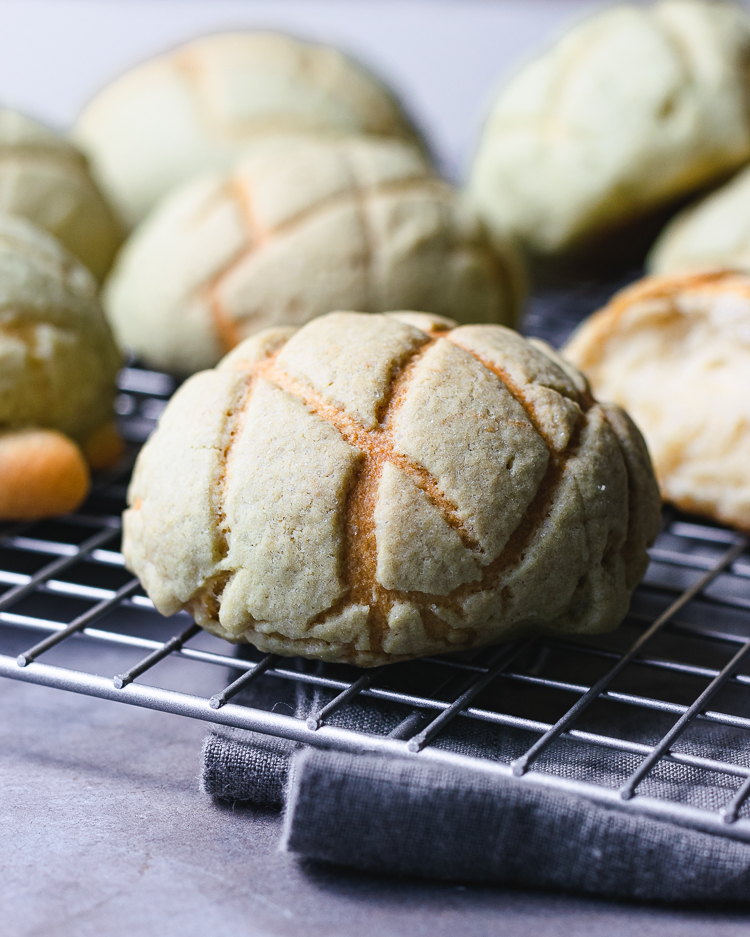
What is Melon Pan?
Japanese melon pan (メロンパン) was my favorite sweet bread as a kid. Whenever we went to a Japanese bakery I would always go for the melon pan. It’s basically sweet bread covered in a cookie! What could be better? Don’t be fooled by its name though — it doesn’t actually have melon in it (a fact I was not aware of until last year when I first started making my own). It’s called melon pan simply because the cookie on top of the bread is cut in such a way that makes the bread look like a melon. Other cultures have their own sweet breads similar to melon pan, such as Hong Kong pineapple buns and Mexican conchas.
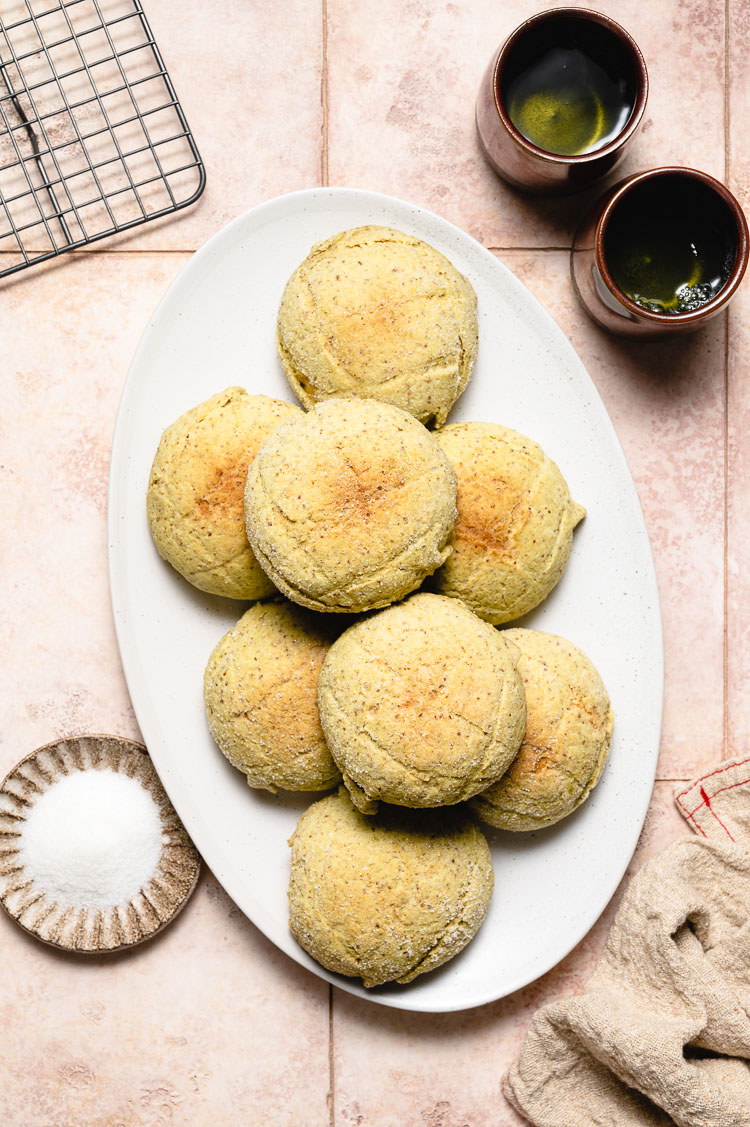
Key Ingredients
- Bread Flour* ⟶ Bread flour is recommended for best results.
- Instant Yeast* ⟶ You can also use active dry yeast, but add the yeast to warmed soy milk first, letting it sit for a few minutes until foamy.
- Soy Milk ⟶ You can sub another plant-based milk, but I prefer soy milk since it’s most similar to regular dairy milk.
- Vegan Butter or Coconut Oil ⟶ Use refined coconut oil* for the buttery mouthfeel without the coconut flavor. You can use either coconut oil or vegan butter in the bread, but I recommend using coconut oil in the cookie crust for the crunchiest result. Vegan butter has more moisture than coconut oil so results in a slightly softer cookie top.
- All Purpose Flour ⟶ For the topping to produce a soft and tender cookie layer.
- Potato Starch ⟶ A little bit in the topping helps hold the cookie layer together and makes it a bit lighter and crisper.
- You’ll also need sugar, salt, and baking powder.
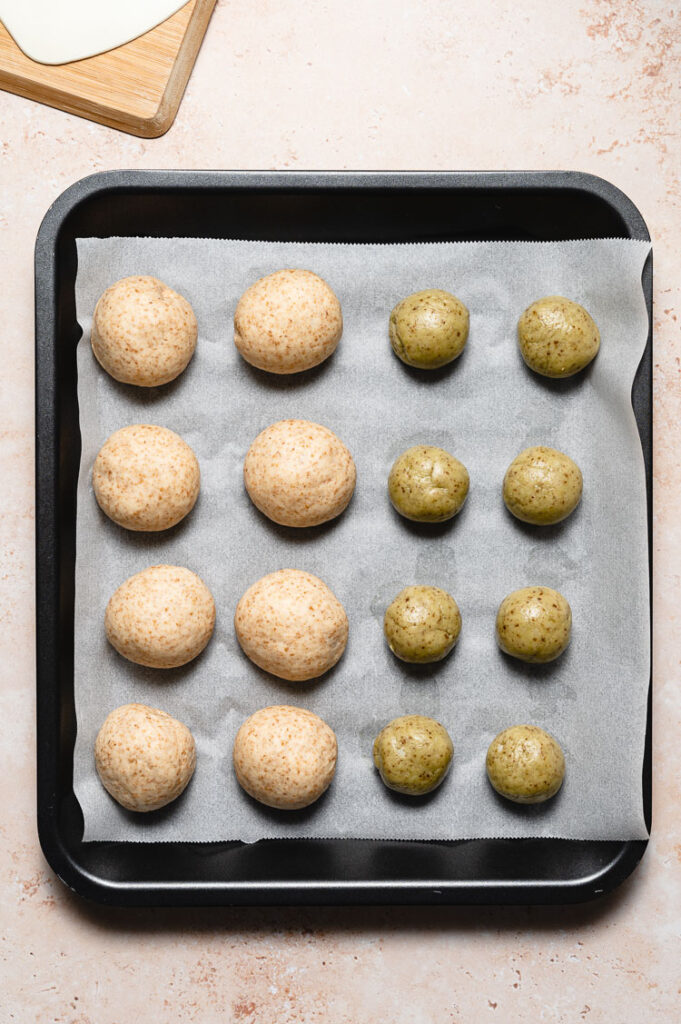
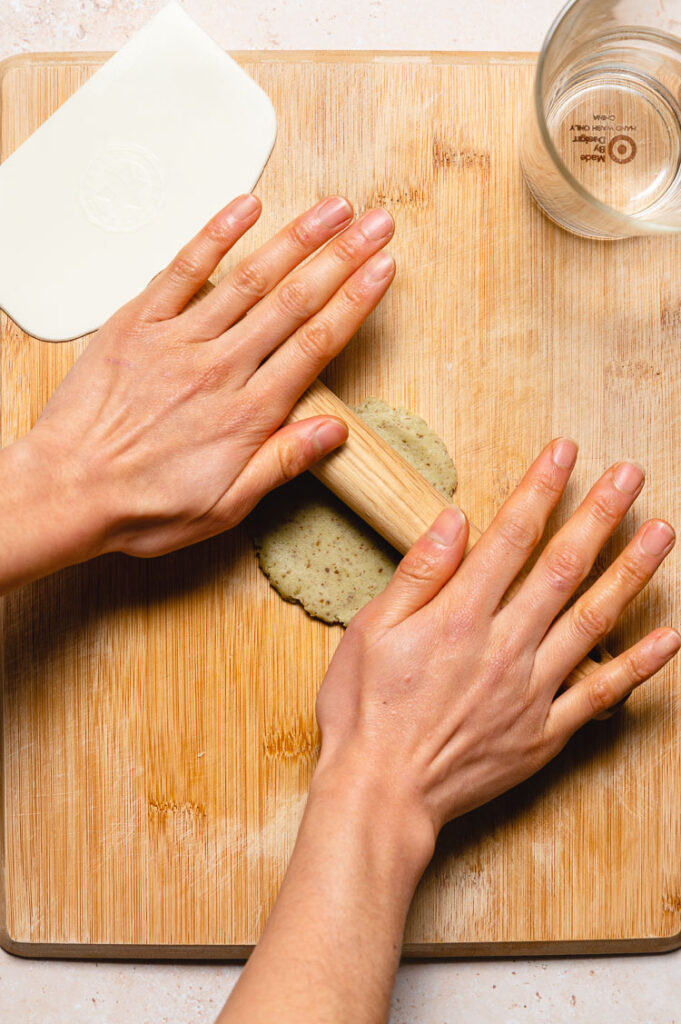
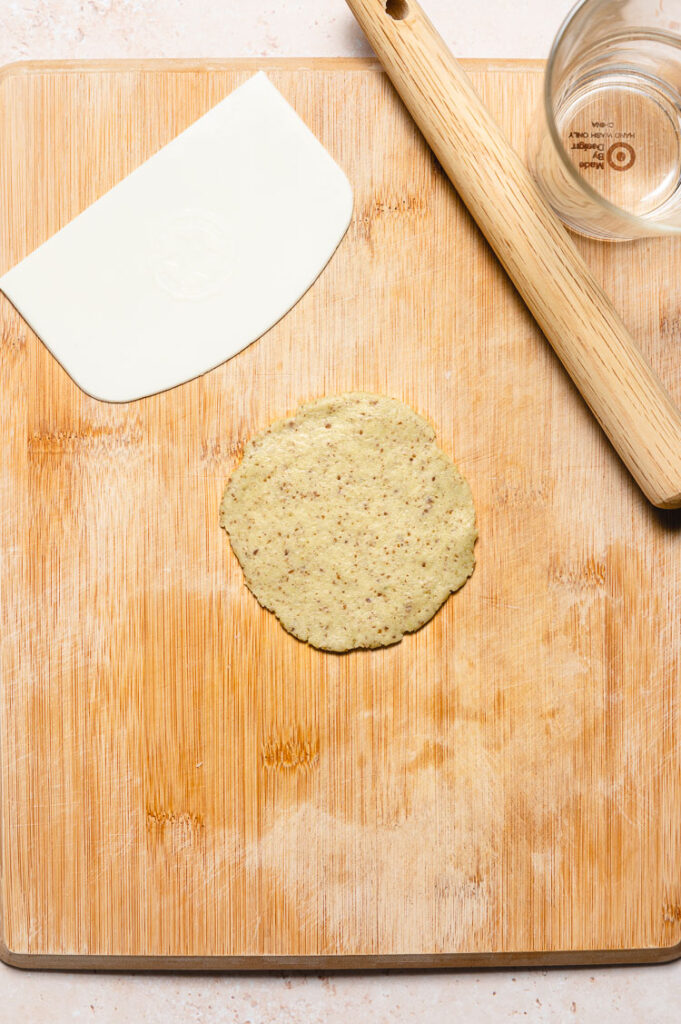
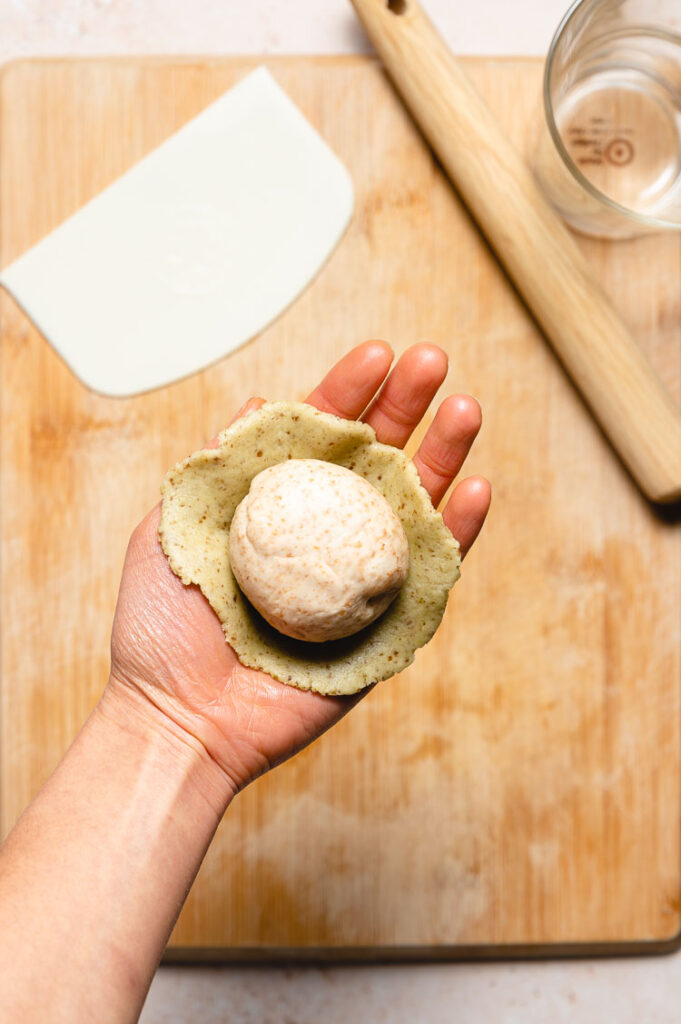
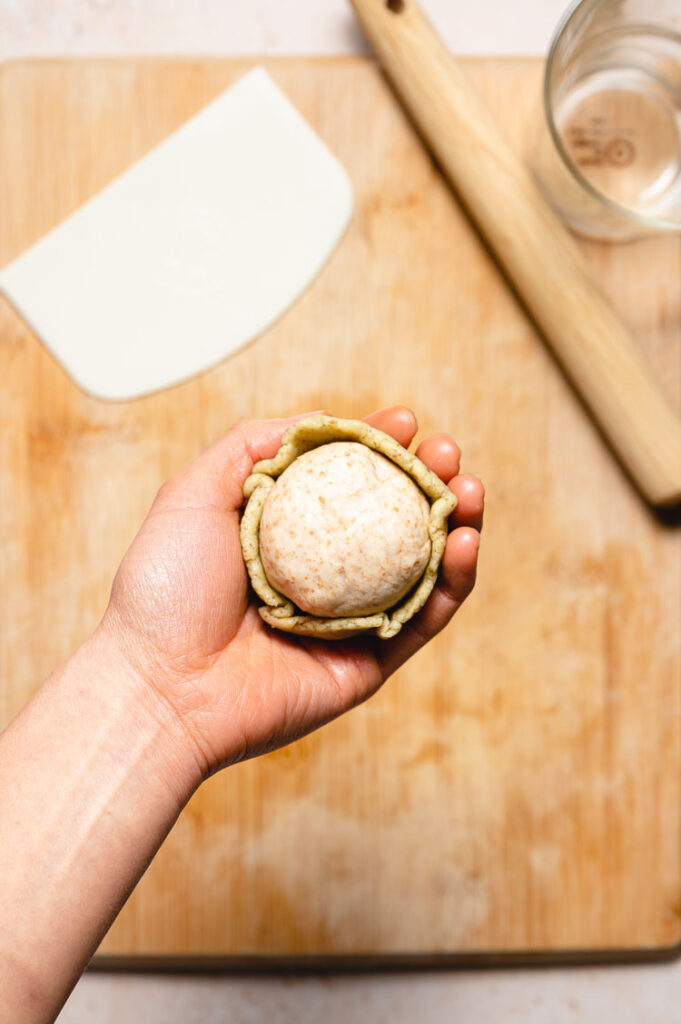
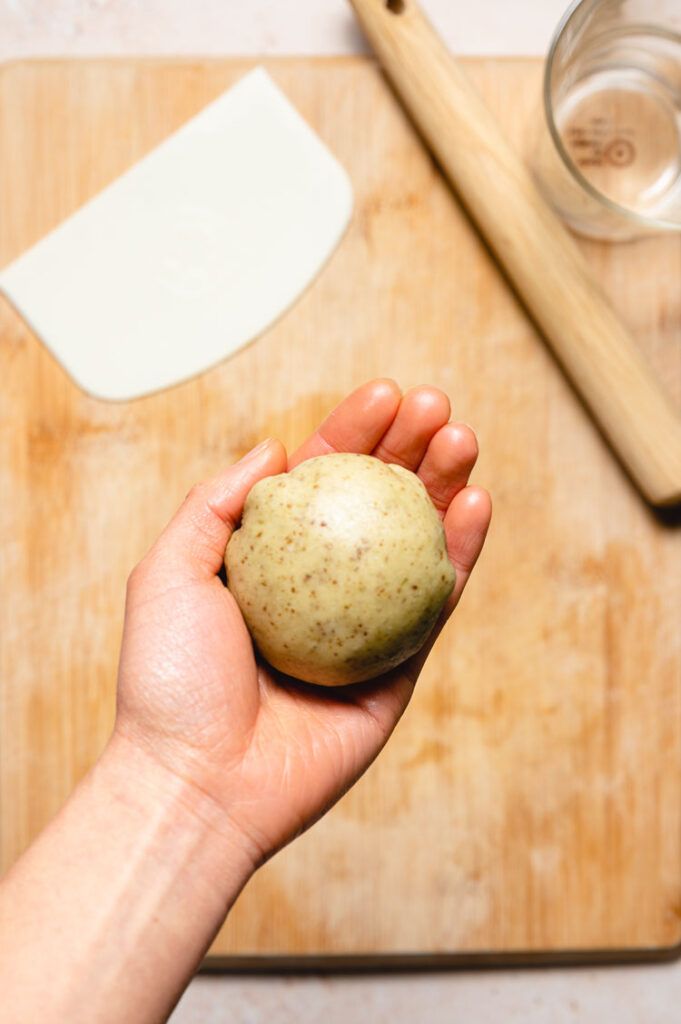
How to Make Vegan Melon Pan
Here’s a brief overview of each step for making melon pan. For detailed steps see the recipe card below. (Please note, the cookie topping in the photos was made with ground flaxseeds (hence the brown specks), but I have since updated the recipe to omit these.)
The dough comes together like any basic sweet bread dough. I recommend using a stand mixer if you have one – this is most convenient and will produce the fluffiest results. However, you can also knead by hand or use the “dough” setting on a bread maker.
- Once the dough has proofed, divide it into 8 portions. Also divide the cookie dough into 8 portions, roll these into balls.
- Flatten the cookie dough balls into disks. You can do this by hand, with a rolling pin, or with the flat bottom of a round glass.
- Place one bread dough ball in the center of the cookie dough. Wrap the cookie dough around the bread so it covers most of the surface (but leave the bottom exposed).
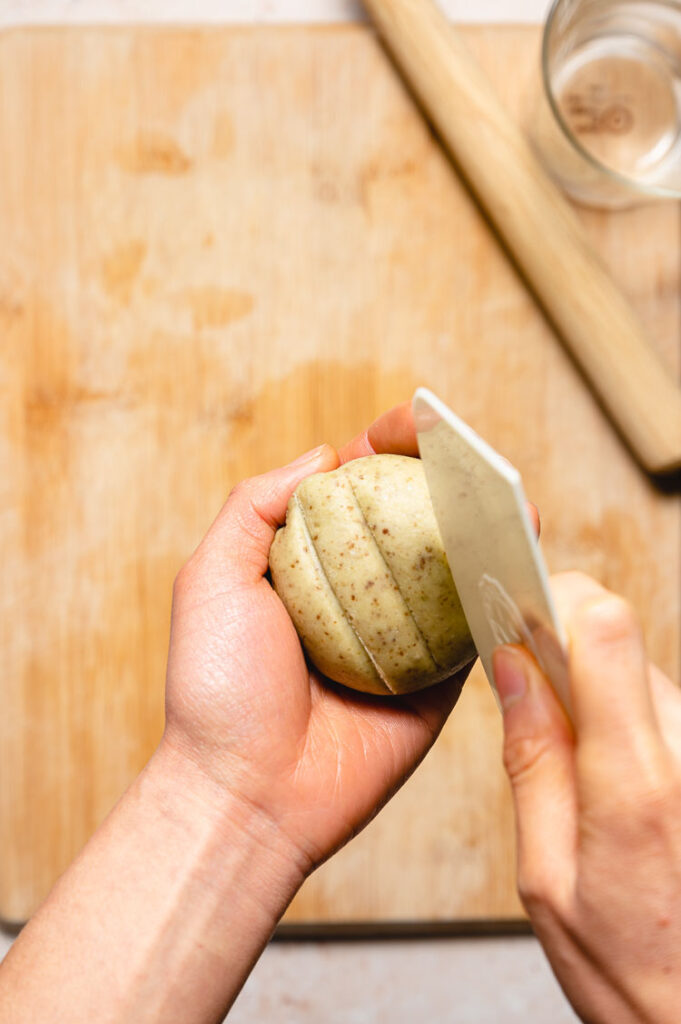
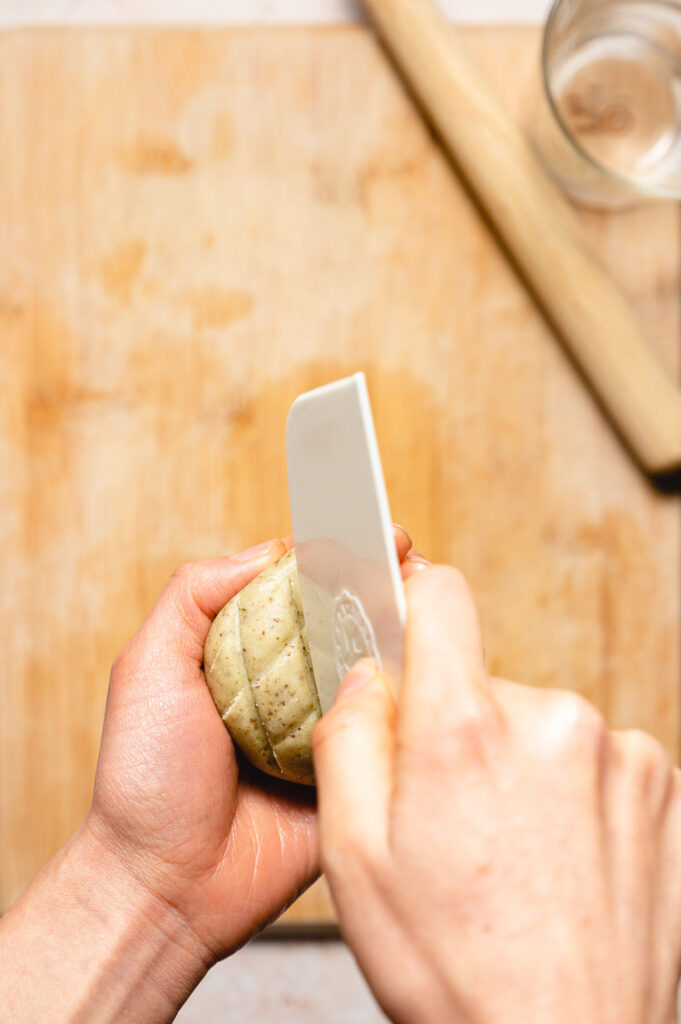
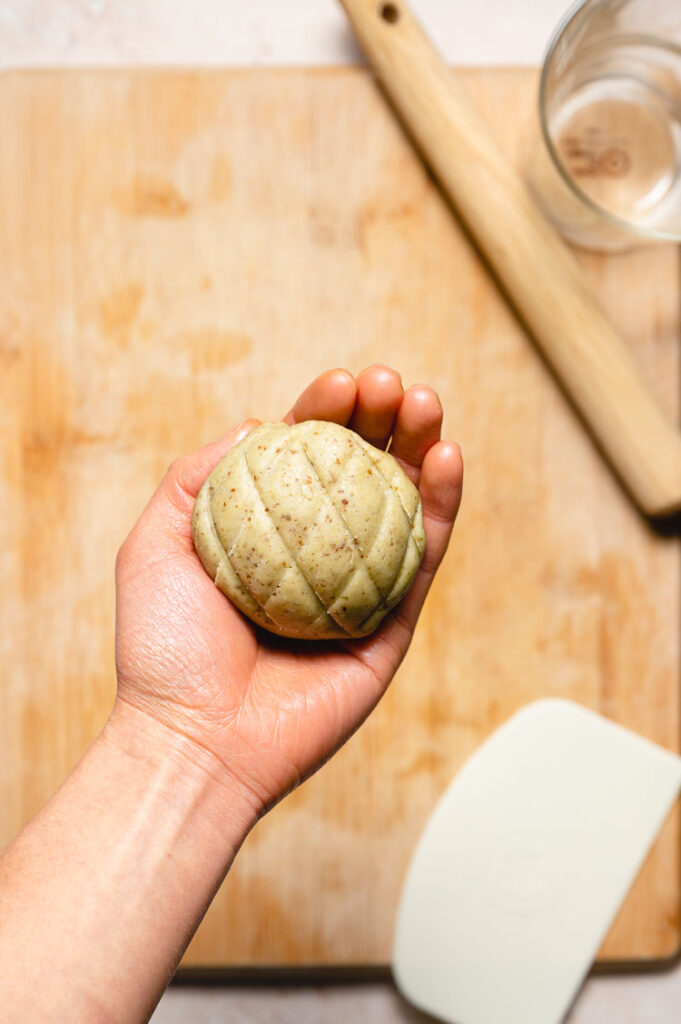
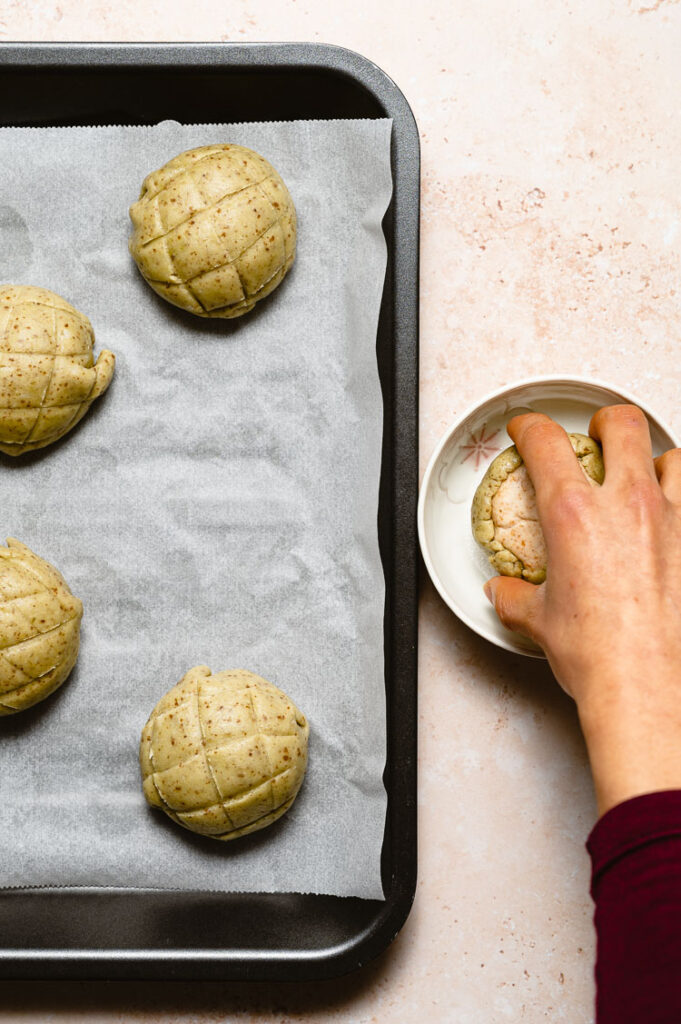
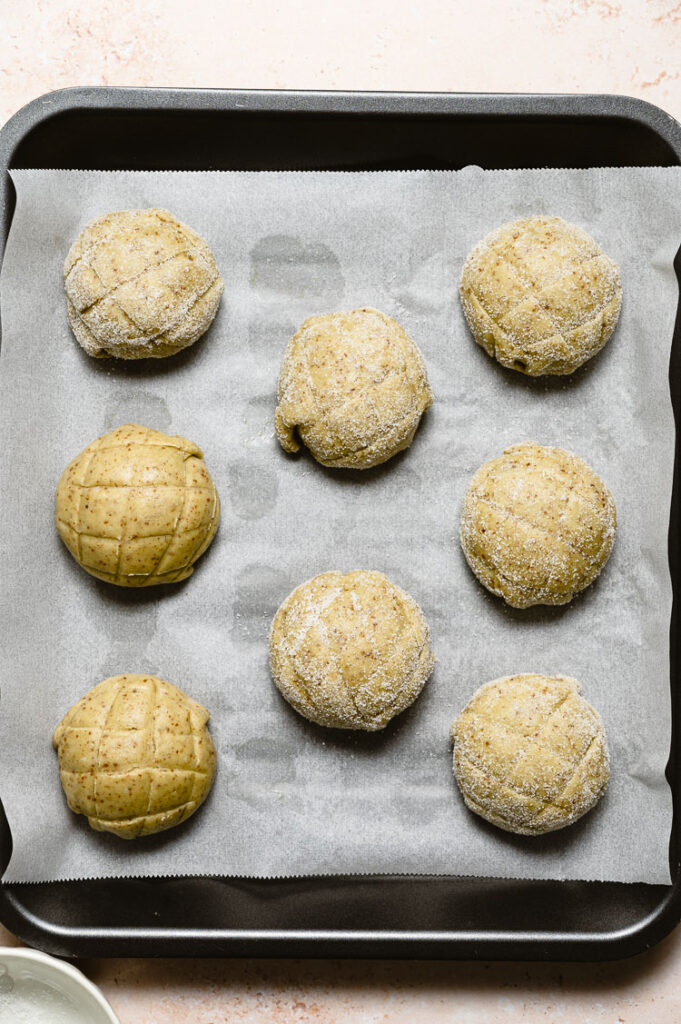
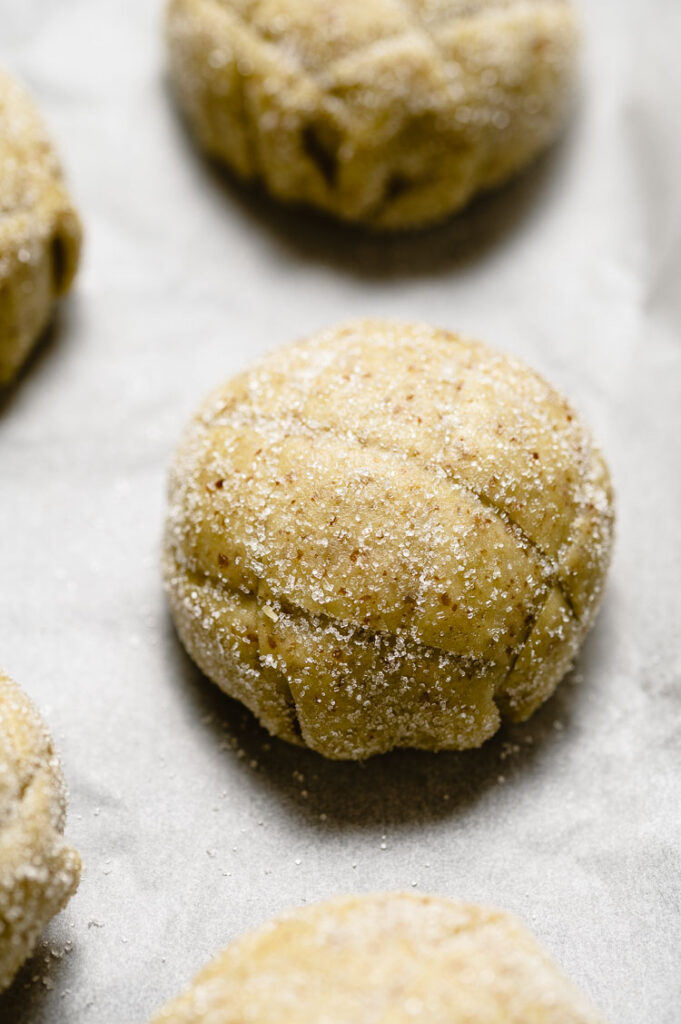
- Create the melon pattern by making 3-4 shallow cuts across the top of the cookie dough, then make 3-4 more cuts in the opposite direction.
- Roll the cookie part in sugar for a crunchier top.
- Bake at 350°F for 15 minutes. The bottoms of the buns should be lightly browned.
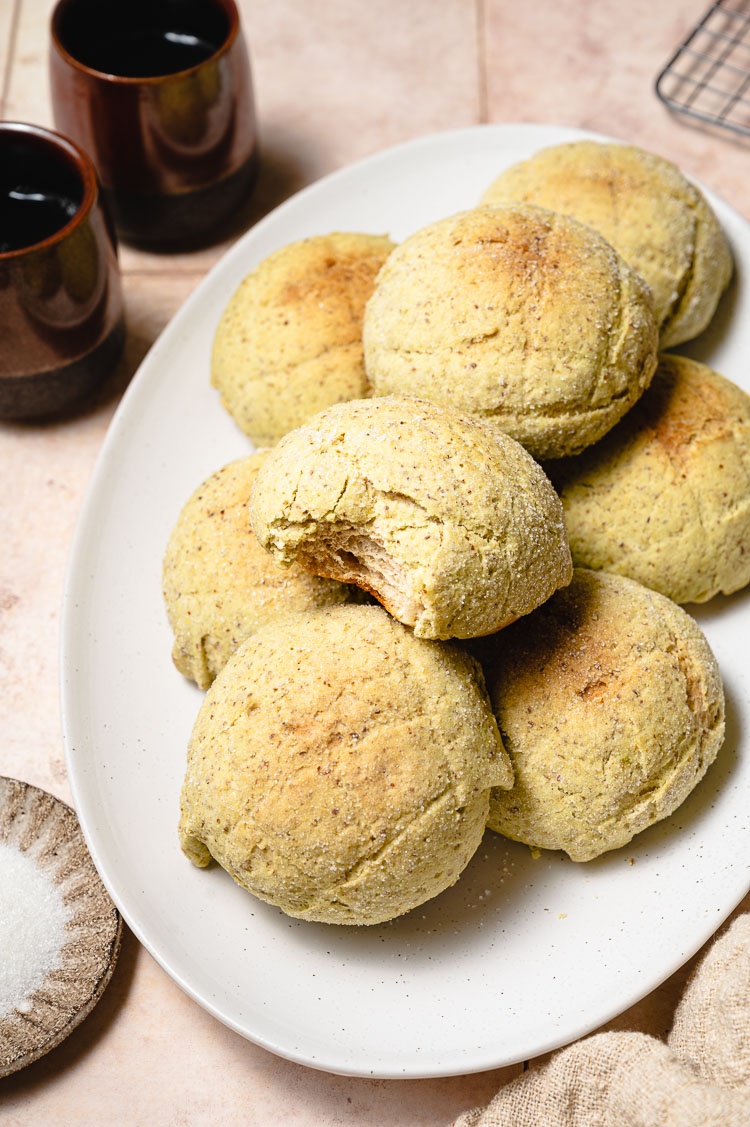
Flavor Variations
In its simplest form, melon pan doesn’t have a very distinct flavor. It’s sweet and buttery – what’s not to love though honestly, still delicious! But if you’d like to play around with the flavors and colors, here are some suggestions:
- Matcha ⟶ I like to add just a pinch of matcha powder for color, not flavor. But if you’d like it to taste like matcha, try using 1 teaspoon in the cookie dough. Do note, the color and flavor greatly depend on the quality of your matcha powder. Higher quality matcha powder is typically more vibrant green, while low quality matcha can be almost brownish green.
- Coffee ⟶ Add 1 teaspoon instant coffee to the cookie dough. Whisk with warm milk first to make sure it dissolves.
- Chocolate ⟶ Add chocolate chips to the bread dough and/or cookie dough. You can also try adding two tablespoons of cocoa powder in the cookie dough, adding a little extra milk as needed to moisten the dough.
- Coffee Chocolate Chip ⟶ Add 1 teaspoon instant coffee (mixed with warmed milk first) and a handful of chocolate chips to the cookie dough.
- Strawberry ⟶ Try blending some freeze dried strawberries into the cookie dough.
- Vanilla ⟶ Add 1 teaspoon vanilla extract to the cookie dough.
- Cinnamon Sugar ⟶ Roll in a mix of 1 tbsp sugar + 1 tsp cinnamon before baking.
- Black Sesame ⟶ Add ~1 tbsp black sesame seeds to the cookie dough.
- Also try my Pumpkin Melon Pan!
There are so many different flavors you can try. Get creative and let me know in the comments what you added to yours!
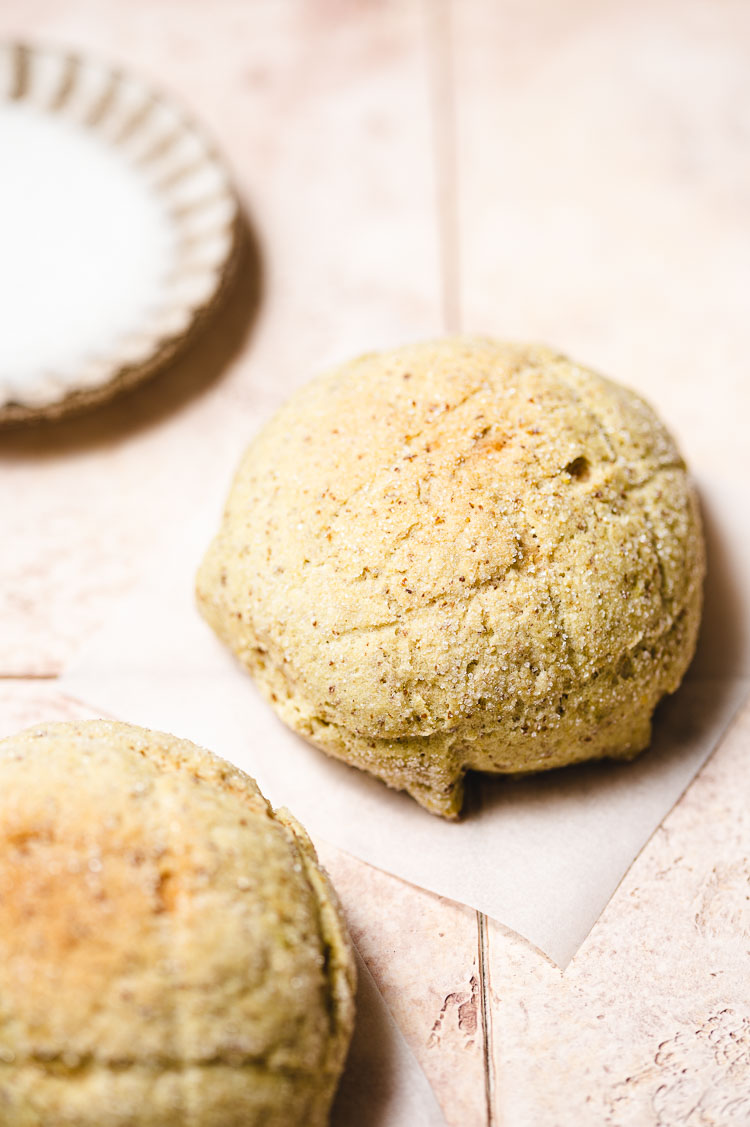
Helpful Baking Tools
- Silicone Pastry Mat* ⟶ for kneading and rolling out the dough
- Silicone Baking Mat* ⟶ you can also use parchment paper
- Cooling Rack*
- Dough Cutter*
More Japanese Breads and Sweets
- Vegan Pumpkin Melon Pan
- Chocolate Marble Milk Bread
- Vegan Anpan
- Vegan Taiyaki
- Black Sesame Zenzai
- Vegan Tofu Purin (Japanese Custard Pudding)
I hope you love this Vegan Melon Pan as much as I do! If you do make it, don’t forget to tag me in your photos on instagram @ellielikes.cooking, leave a comment/rating below, and let me know how you liked it! I love seeing your tasty recreations 🙂 Happy baking!
Recipe updated July 12, 2025 with modified cookie dough.
Japanese Melon Pan (Vegan)
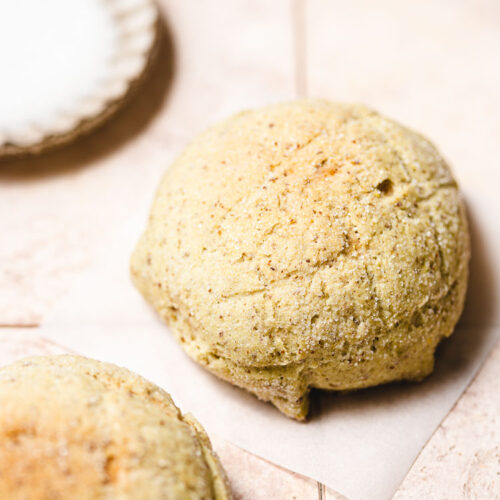
Ingredients
Bread
- 2 cups (240g) bread flour or all purpose flour
- 2 tbsp (24g) granulated sugar
- ½ tsp (3g) salt reduce by ⅛ tsp if butter is salted
- ½-1 tsp (1½-3g)
instant yeast*1 - ½ cup + 2 tbsp (150ml) soy milk
- 2 tbsp (28g) vegan butter or refined coconut oil, melted
Cookie Topping
- 3 tbsp (40g) vegan butter or refined coconut oil softened
- ¼ cup (48g) sugar
- 3 tbsp soy milk room temperature
- ¾ cup + 2 tbsp (105g) all purpose flour
- 2 tbsp (15g) potato starch
- ¼ tsp baking powder
Instructions
Bread Dough
- Prepare bread dough: In a large bowl, mix together flour, sugar, salt, and instant yeast. Stir in milk and oil (if using) until combined, then turn out dough onto a lightly floured surface.
- Knead: Knead (with your hands or a stand mixer) until the dough comes together and becomes slightly elastic (about 5 minutes). If using butter, stretch the dough out into a small log and place small cubes of butter on top (or add directly to stand mixer). Roll up the dough and continue kneading. It will be very greasy at first, but just continue kneading and the dough will absorb the butter and become smooth.
- When ready, the dough should be smooth and just slightly sticky, but it shouldn't stick to your hands. (You can use the Windowpane Test to see if enough gluten has developed. You can also test the elasticity by poking the dough — it should bounce back.) This should take about 15-20 minutes of kneading by hand, or about 10 minutes in a stand mixer. If using a stand mixer, check the dough often since it is possible to over-mix the dough.
- Proof: Roll your dough into a ball and place in a large greased bowl. Place a tea towel or plastic wrap over the bowl and let the dough rest until doubled in size. You can place the bowl in the oven if your oven has a "proof" setting, or just turn the oven light on. You can also leave it out at room temperature, but your rise may take longer. The warmer the environment, the faster it will rise. (Don't rush it though. Flavors deepen as the dough proofs.)
Cookie Dough
- Make cookie dough: Cream together vegan butter/coconut oil and sugar, then whisk in milk until well combined. Add flour, potato starch, and baking powder and mix well. Form dough into a ball, wrap in plastic wrap, and place in the fridge.
- Take the cookie dough out of the fridge about 10-15 minutes before you assemble the melon pan. This will give it time to come to room temperature and soften. You want your cookie dough to be rollable but not completely loose.
Shape Melon Pan
- Check bread dough: My dough usually takes about 1 ½ – 2 hours to proof on the kitchen counter. To test if it is done, poke a hole in the center of the dough with your finger. If the hole doesn't close back up, it's ready.
- Deflate: Punch down your dough and flip onto a non-stick surface. Divide the bread dough into 8 pieces and roll each into a ball.
- Assemble melon pan: Divide the cookie dough into 8 pieces. Roll each out into a flat disk shape. Place one bread dough ball in the center of one disk. Wrap the cookie dough around the bread dough so that it covers most of the surface. Repeat with remaining dough. If you'd like, you can roll the cookie part in some sugar (preferably coarse sugar) for a crunchier top.
- Create melon pattern: To make the "melon" pattern on the breads, make 3-4 shallow cuts across the top of the cookie dough (don't cut all the way through the cookie dough), then make 3-4 more cuts in the opposite direction to create the melon pattern.
- 2nd proof: Place the buns on a lined baking sheet and loosely cover with plastic wrap or a tea towel. Place in a warm environment and let rise for about 20-40 minutes. It should increase in size during this second proof.
- Preheat & bake: While the dough is proofing, preheat the oven to 350°F/180°C. Bake for 15 minutes, until the cookie crust is firm and the bottoms are lightly browned. The bread should feel slightly firm but still soft inside. Transfer to a cooling rack and let the buns cool completely.
Notes

*Disclosure: This page may contain affiliate links. As an Amazon Associate I earn from qualifying purchases, but the price remains the same to you. Thank you for supporting Ellie Likes Cooking!
Save for later!
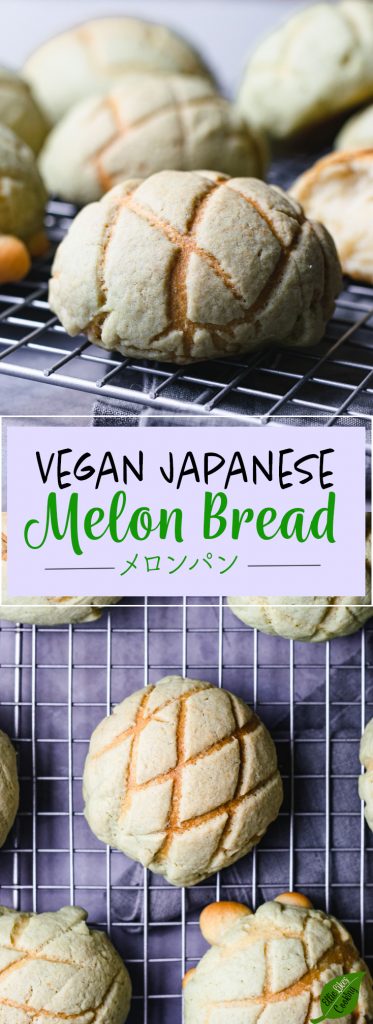

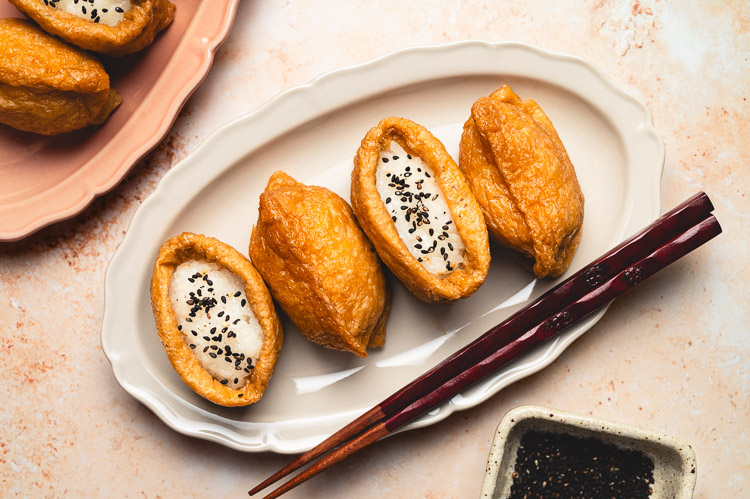
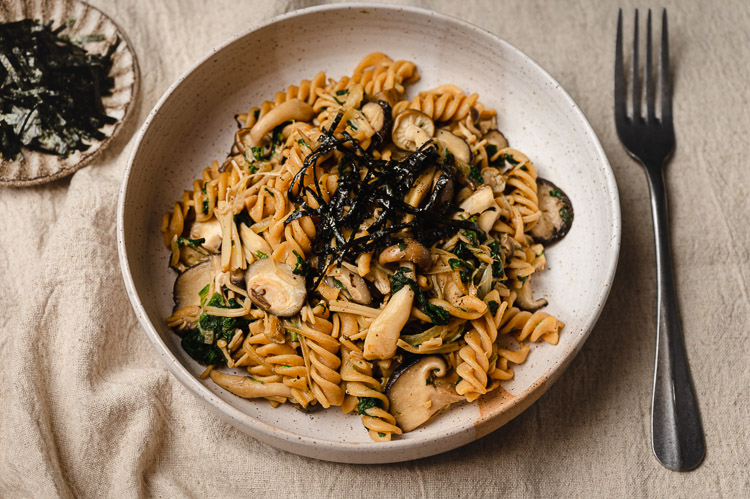
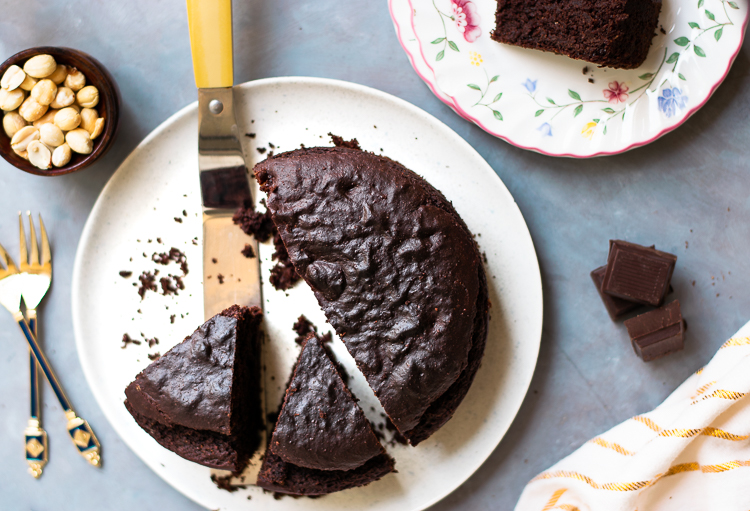
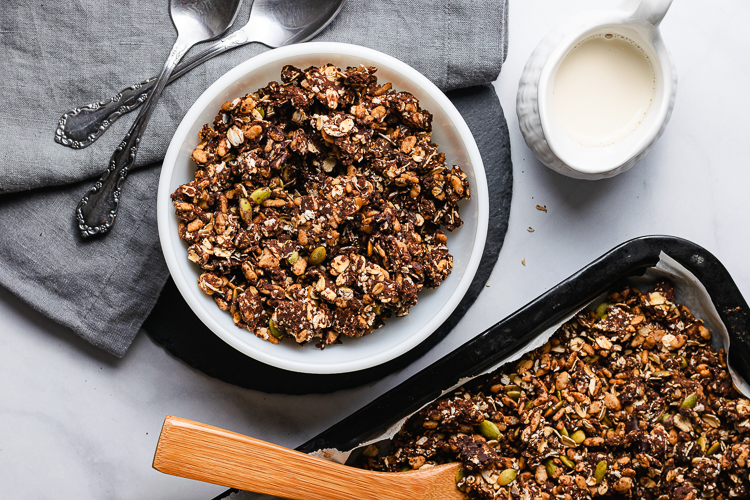
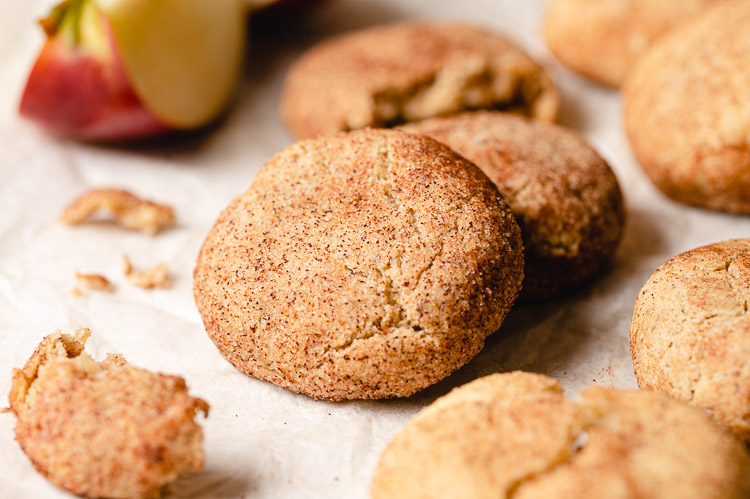
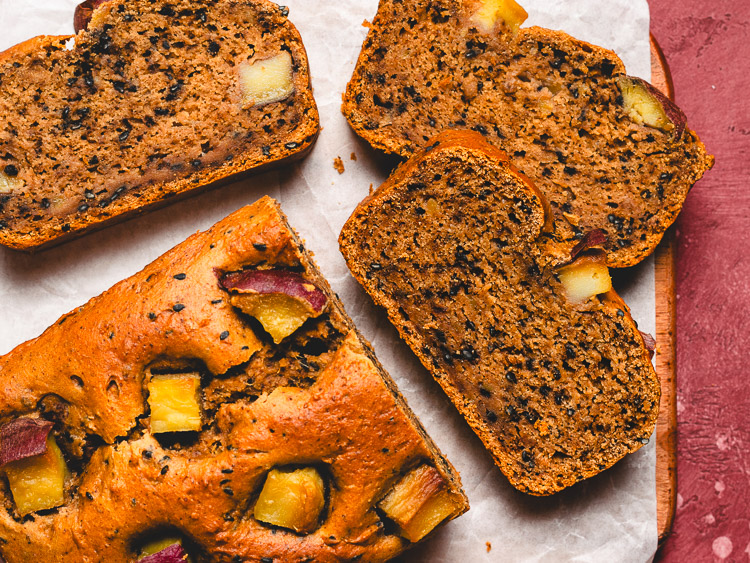
recipe for cookies calls for pumpkin puree and pumpkin spice but neither are listed in the ingredients list. i want to try this recipe but don’t want to mess up the cookie part !
Oops! Sorry about that, I mixed up the instructions with my pumpkin melon pan. Pumpkin puree and pumpkin spice are not required for this recipe. Just updated the instructions. Enjoy!!
woohoo ! thank you. making it tonight !
Made this yesterday! It was my first time baking bread and melon pan is my favourite Japanese bakery treat. They turned out so well, thank you for the recipe. ☺️
So happy you liked it Sarah! Melon pan is my favorite as well and it’s such a treat to be able to make it at home ☺️
Thanks so much for the recipe! Is it possible to use a different egg substitute instead of flax seeds? I have ‘Just egg’, but no flax or chia seeds. Thanks!
Hi Allie, I haven’t tested it with other egg substitutes but you can try Just egg, aquafaba, or applesauce. Or you can omit the egg substitute completely and just add more milk – the cookie crust will be a bit more crumbly and crack more easily. Still tasty though! Let me know how it goes!
Thank you for the vegan melon pan recipe – the one and only on google search! I just made some – looking forward to sharing them with my partner! BUT during 2nd proofing, the cookie top cracked so much so my melon pan aren’t pretty anymore! How do I fix that for next time? Lol
Oh no! I would look at a few areas:
1) If you made the cookie top too thin it will crack more easily, since the dough below is expanding. You can make a thicker topping that just covers the top of the dough (doesn’t have to wrap the bottom).
2) Did you use ground flax/chia seeds? These help bind the cookie topping so they don’t crack or crumble as easily.
3) Your cookie dough may have been too dry. Were you able to roll out the cookie dough easily without it cracking? You might benefit from a little extra milk next time or slightly less flour.
4) If you cut lines in the cookie top to make a melon pattern, make sure you just make very shallow lines, don’t cut too far into the cookie topping or it will break apart during proofing/baking.
Hope that helps! Let me know if you still have trouble next time – luckily it still tastes good even if it doesn’t look so pretty 😉
So glad I found your recipe. My husband loves melon pans and we couldn’t have it this time around in Japan because of the milk and egg they use in it. Just made a batch this morning and it looks really good! Haven’t tasted it yet but I’m sure it tastes as good as it looks! I used butter for the pan and coconut oil for the cookie dough and noticed that the cookie dough cracked very easily. Do you think using butter next time would make it stay together better? Or maybe I can double the cookie dough recipe; you can never say no to more cookie 😛 Also, would it be okay to use egg replacer as per to flax so there aren’t flax flecks?
Hi! I prefer coconut oil for the cookie dough as I find butter to make it too soft. You can definitely 1.5x or 2x the cookie dough if you like a thicker topping!
I haven’t tested it with other egg replacers but since the flax is used as a binder, I think it should work with other egg substitutes 🙂
Thank you so much for sharing! It turned out so good! I just did it plain & used oatmilk instead of soy.
I’m so happy you enjoyed them and good to know it works with oatmilk!